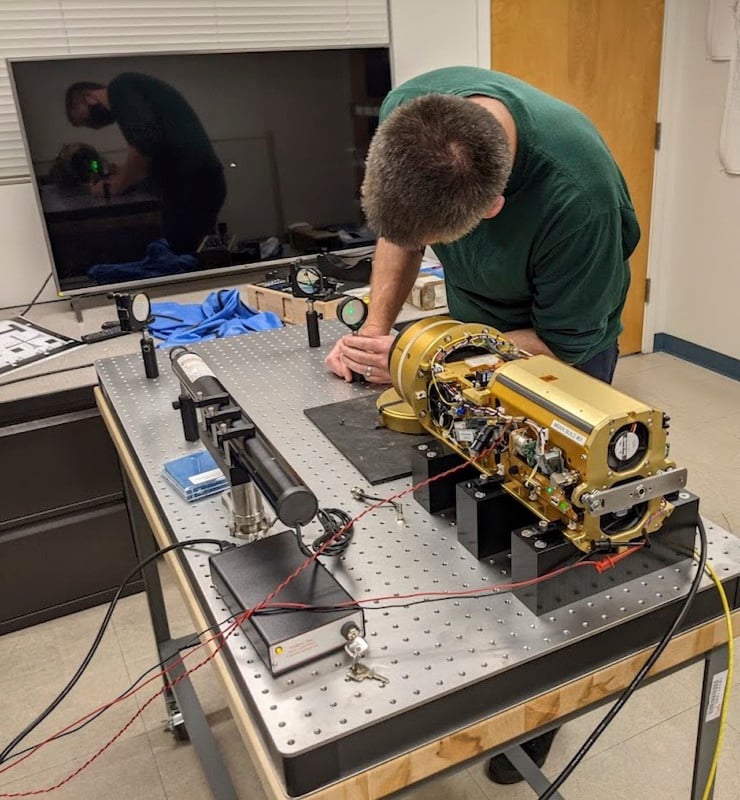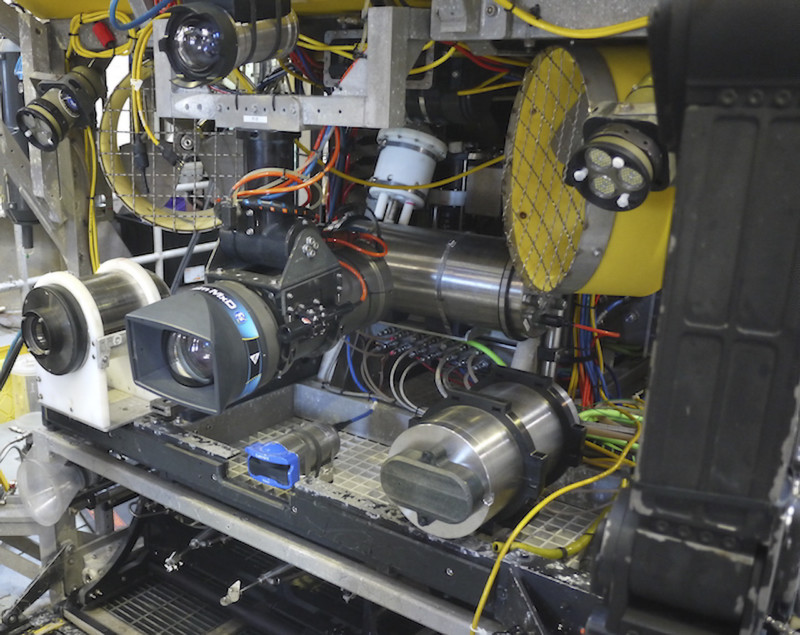Custom Camera Captures 4K Video Up to 2.5 Miles Under the Sea
If it seemed like the footage of deep-sea creatures has been more spectacular lately, that is because it is. The Monterey Bay Aquarium Research Institute (MBARI) recently updated its deep-sea camera to capture 4K footage at incredible depths.
MBARI has used 1080p Full HD cameras for years to capture thousands of hours of video in order to study the creatures that live at depths of 13,100 feet (nearly 2.5 miles) below the surface. Last year, the research institute partnered with DeepSea Power & Light to upgrade the camera system for use on the MBARI underwater ROVs Ventana and Doc Ricketts.
A Custom High-Resolution Deep-Sea Camera
Video is extremely important to MBARI’s research efforts. The research institute says that in the 34 years it has operated its deep-sea research, its ROVs have logged more than 5,800 dives and shot more than 27,600 hours of video.
HD video was added to MBARI’s ROVs in 20 years ago — with the addition of 1080i resolution — but 4K has quickly become a standard and the team began to investigate how to add the enhanced resolution to its underwater crafts as far back as 2018.
“Seeing the rapid adoption of 4K imaging and recognizing the scientific value that increased resolution brings to our research team, MBARI began evaluating opportunities to upgrade the HD camera systems on our ROVs to 4K in 2018,” explains MBARI Electrical Engineer Mark Chaffey. “The new MxD SeaCam that we developed with DeepSea Power & Light captures life in the deep sea in astonishing detail.”

The new camera system can now capture 4K UHD which has four times the resolution of Full HD video at 3840 x 2160 pixels. As expected, it’s not quite as simple as mounting a 4K camera to an underwater ROV, as the immense pressures at the depths the team wishes to explore would crush typical camera systems. MBARI chose to work with DeepSea Power & Light as the group has extensive experience with glass camera domes that can withstand the kinds of pressures found in the deep sea.
“Designing a deep-water 4K camera required careful consideration about operating under extreme conditions — the deep sea is an unforgiving environment that is cold and under crushing pressure. Since MBARI’s ROVs conduct hundreds of dives each year, reliability was also important,” MBARI explains.
“Achieving the performance goals for the camera required a large, precision optical dome port that was larger than any commercial housing available for these depths at the time. The DeepSea Power & Light team had the expertise and tools for simulation, manufacturing, and validation needed to successfully produce a novel deep-water housing.”
DeepSea Power & Light worked with Fathom Imaging on the optical design of the lens that would sit in front of the deep sea camera. MBARI’s goals for a high-resolution but low-distortion image across the camera’s desired telephoto range meant that a bespoke optical adapter had to be created.
The MxD SeaCam, a Major Undersea Camera Milestone

The result of these efforts is the MxD SeaCam: the first of its kind underwater 4K imaging system.
The MxD SeaCam was first deployed on the Ventana for a series of test dives in the fall of 2021 before being attached to the Doc Ricketts for active science operations. MBARI says the first few expeditions with it have already proven rewarding.
“4K gives us much higher resolution for studying the structure of the animals we investigate, particularly the transparent species,” says MBARI Senior Scientist Bruce Robison, who studies life in the midwater. “4K lets us see the fine details of how these animals are put together and how all the individual parts work, individually and together.”
One video that was captured with the new camera system may be familiar, as it is one of the more spectacular videos shot under the sea in some time: the rarely-seen giant phantom jelly, published on PetaPixel in December.
The increased resolution now allows MBARI to shoot detailed video as well as extract high-resolution still photos like never before.
“The MxD SeaCam camera provides an exciting new level of visibility into the deep sea. The footage captured by this camera promises to advance not only research, but also education,” MBARI says. “Images are the most powerful way to communicate the beauty and importance of the deep sea and share the scientific knowledge and discoveries made there with the public.”
Video clips captured with the MxD SeaCam can be seen as part of the upcoming Into the Deep exhibition at the Monterey Bay Aquarium which opens on April 9.
Image credits: All photos by MBARI.